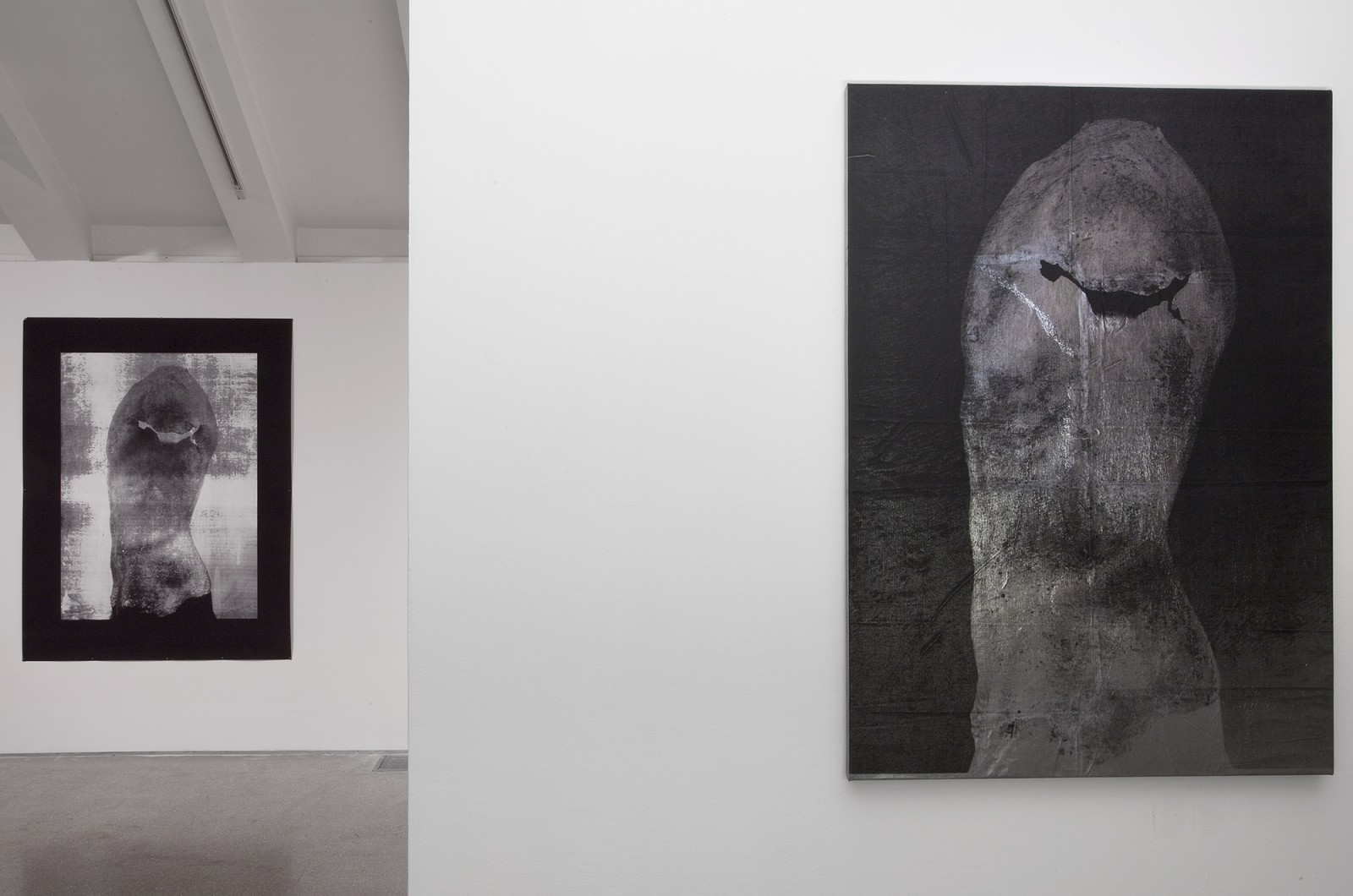Fugitive Mirror : Working with the Marshall Collection
British School at Rome 2010
Fugitive Mirror: Working With The Marshall Collection was the first public presentation of my ongoing engagement with the John Marshall Archive held at the British School at Rome Archive and Special Collections Repository.
John Marshall (1862-1928) was a scholar of Greek and Roman sculpture and a commercial agent of antiquities. The archive of images that he collected and commissioned reflects both his working practices and the now questionable melding of these roles. From 1906 until his death in 1928 Marshall was the exclusive European Agent of antiquities to the Metropolitan Museum of Art in New York City. His archive comprises approximately 800 early 20th century gelatin dry plate negatives and approximately 2500 gelatin silver prints documenting Greek and Roman sculpture.
Image above: Portrait of the Living and Dead 2 2010
silver and aluminium leaf on carborundum sandpaper 155 x 117 cm
See further John Marshall Archive related projects here
HEAD REPLACEMENT THERAPY (PLUNDERED II-VI) 2012
SUSPICIOUS MARBLE (OMPHALE) 2017
JOURNEYS IN THE LIFEWORLD OF STONES (DISPLACEMENTS I-X) 2010 -2020
JOURNEYS IN THE LIFEWORLD OF STONES ( DISPLACEMENTS I-X) EXHIBITION
JOURNEYS IN THE LIFEWORLD OF STONES EXHIBITION CATALOGUE
The exhibition Fugitive Mirror: Working with the Marshall Collection was the first Photographic Archive Collection Engagement Project that I embarked on. It was created through close collaboration with the archivist of the British School at Rome Archive and Special Collections Repository, with whom, now many years later, I continue to work with on the material known as the John Marshall Archive.
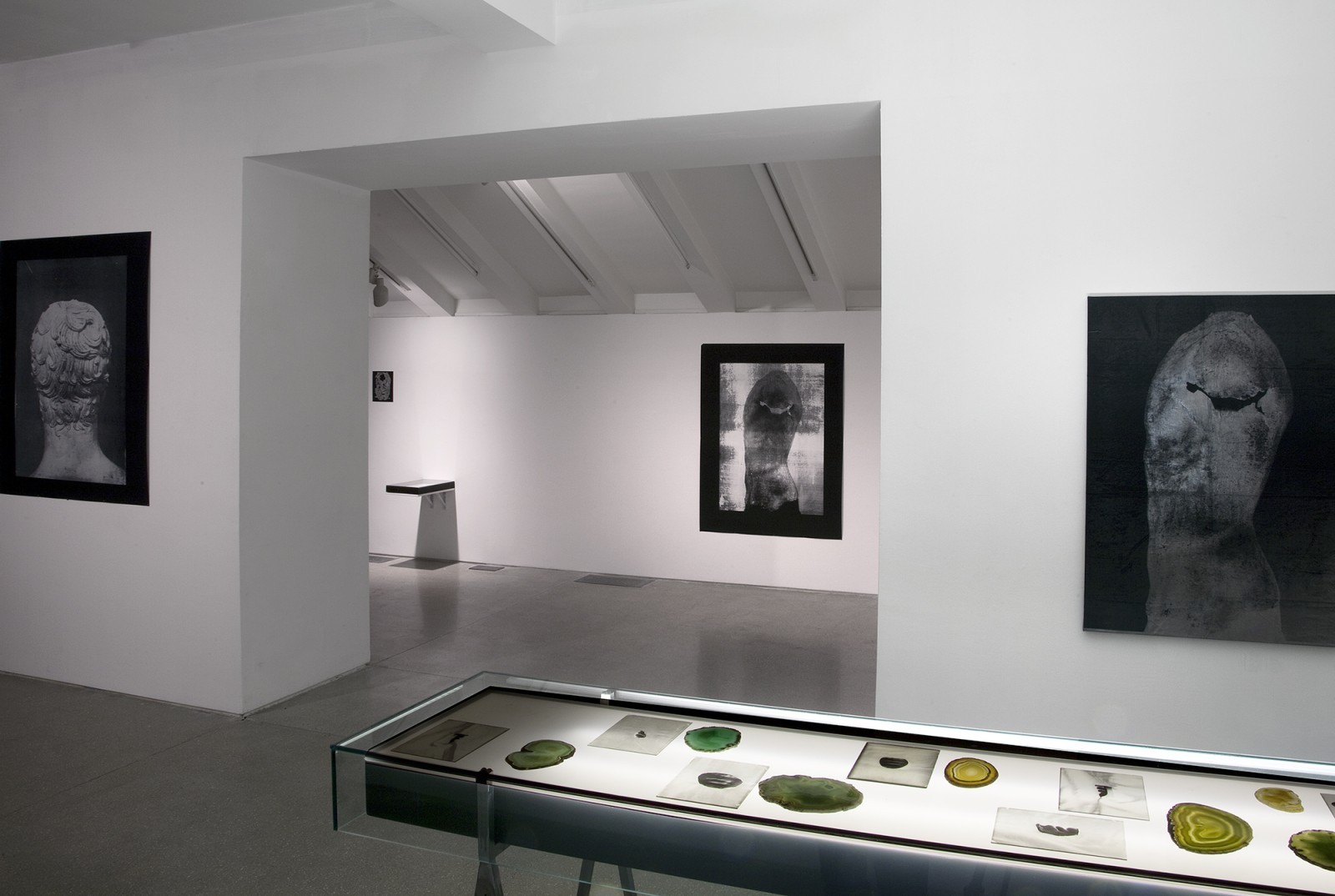
Marshall (1862 -1928) was a highly respected scholar of Greek and Roman sculpture, a collector, and a purchasing agent for the then relatively recently established North American Museums such as the Boston Museum of Fine Arts and the Metropolitan Museum of Art in New York, for whom, between 1906 until his death in 1928, Marshall acted as the sole European Agent for Antiquities. It is relevant to apprecaite that by today’s professional standards, Marshall’s combined roles of scholar, collector, purchasing agent and dealer in ancient antiquities would at very least be considered murky. The John Marshall Archive, comprised of 2,836 prints (mostly gelatin silver), 751 gelatin dry plate glass negatives , 861 index cards and 38 sheets (of notes, letters and drafts of essays,) provides a range of opportunity for both artistic and academic investigation.
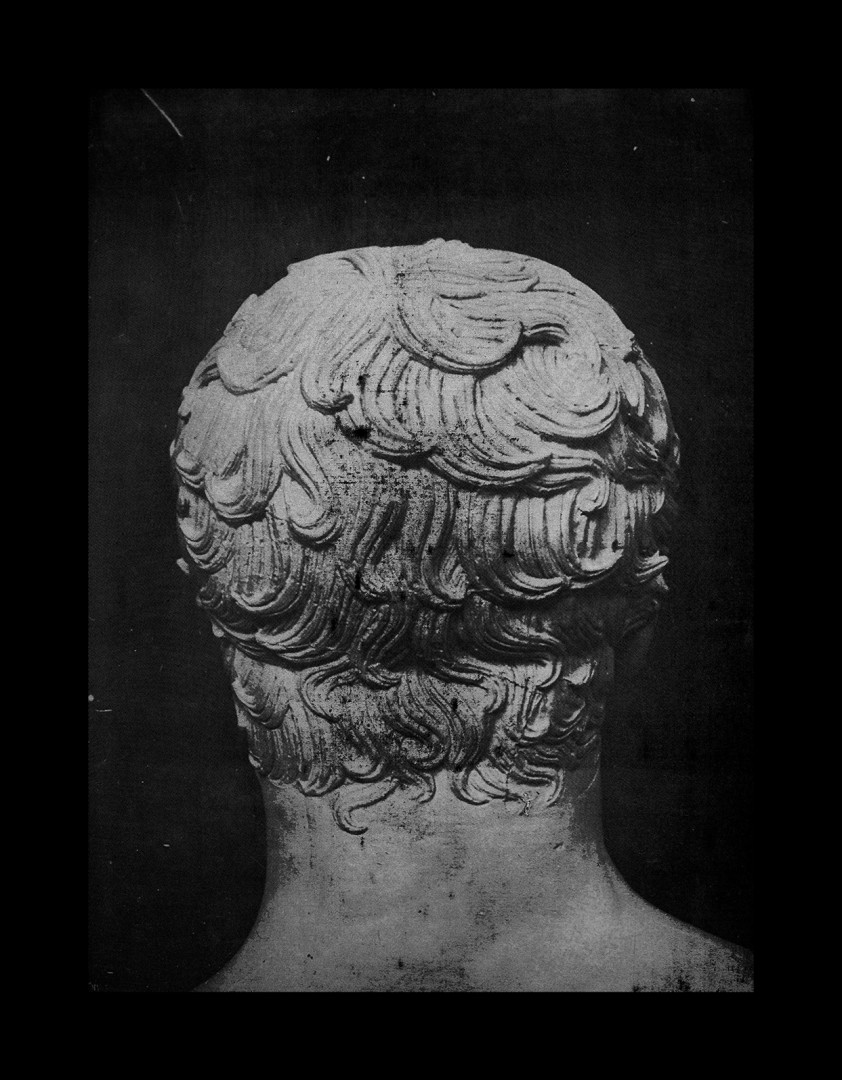
The words fugitive and mirror that I use in the exhibition title, refer to my practical and sensorial experiences of studying, surveying and cataloguing (for the first time) the 751 glass plate negatives. During that long slow process, I tilted each glass plate negative back and forth in low light to discover and record its subject (mostly greek and roman sculpture - or fragments thereof - from different periods). The gentle rocking movement of the glass into and out of low light was often necessary to reveal the image as the oxidation, known as mirroring, of the silver halides that give form to the image, produces a bluish silver sheen on the surface of the glass negative rendering its subject fugitive.
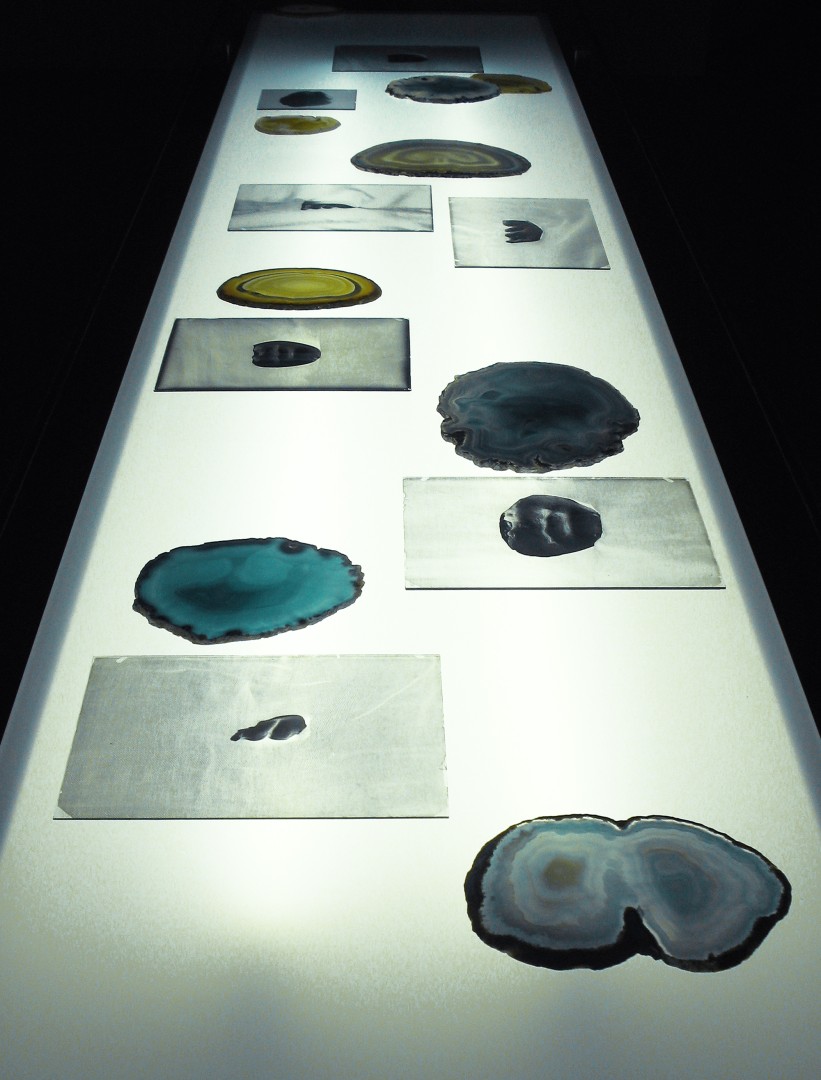
Artworks created for and presented in Fugitive Mirror: Working with the Marshall Collection spanned photography, sculpture, installation, drawing and audio composition. All of the works were either created directly with or inspired by images held on the small glass plate negatives. These included photographic screen prints on large sheets of carborundum sandpaper, photographic screen prints on silvered linen, sculptural elements including reimagined found material and, occupying an axial position in the exhibition design, a customised steel and glass structure that functioned as a light table on which I presented a revolving selection of negatives from the Archive, interspaced with fine slivers of agate. The exhibition also included drawings created with aluminium and silver leaf on carbordundum sandpaper and an audio work (created in collaboration with another of my long term collaborators, composer J. David Franzke), based on a 1912 a handwritten musical score written by John Marshall’s life-partner Edward Perry Warren, combined with the sounds of a stone sculptors workshop and the caw of a crow recalling Marshall’s pet crow with whom he shared freely his Rome residence.
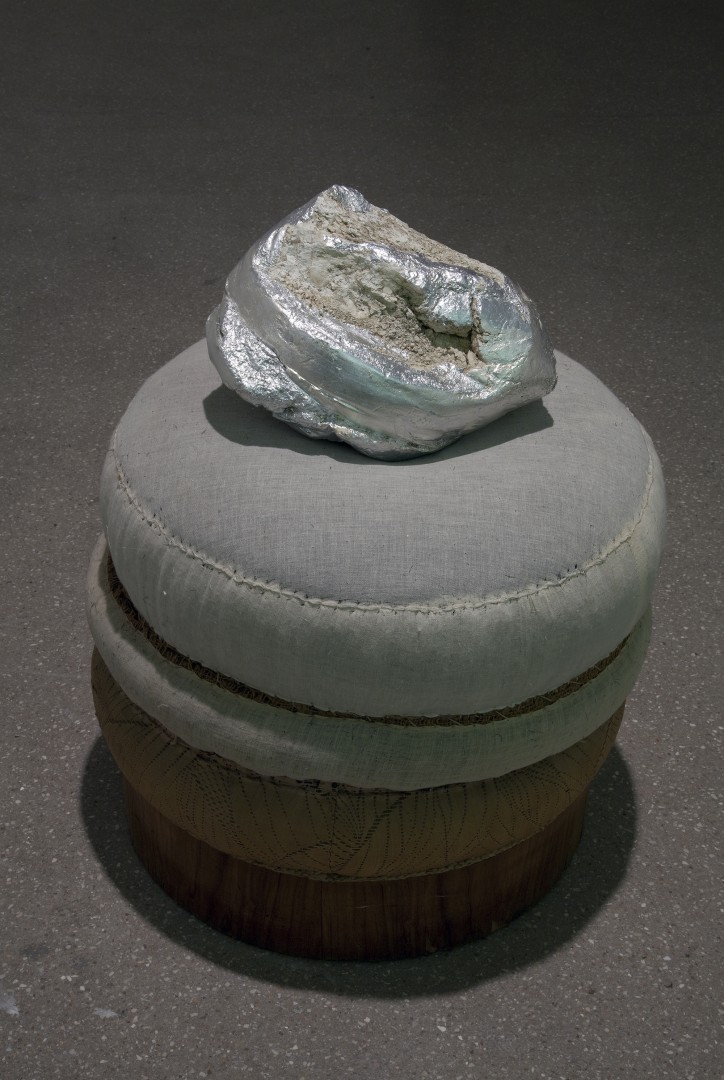
The artworks that comprised Fugitive Mirror: Working with the Marshall Collection can be seen as representative of my introductory investigations of the Archive’s holdings. But, without conscious intent, the exhibition became a beginning. My ongoing work with this idiosyncratic collection of materials (spanning 1900 -1928) continues to unfold in varying conceptual and material formulations, through which I examine the social, museological and ethical dimensions of this archive. Examples include Head Replacement Therapy (2012), which employs humor to explore matters related to the vexed question of sculptural restoration, Suspicious Marble Omphale (2017), which brings to the fore questions related with the practice of faking ancient objects for commercial opportunity, authenticity, originality and reproduceability, and the major decade long project Journeys in the Lifeworld of Stones (Displacements I – X) ( 2010-2020), which by tracing a specific group of objects documented on the glass plate negatives of the John Marshall Archive to the galleries of the Metropolitan Museum of Art in New York, engages with the contemporary discourse concerning the legalities , ethics, moralities and contemporary social legacies of past Collection building practices of some the worlds most profitable Encyclopaedic Museums.
